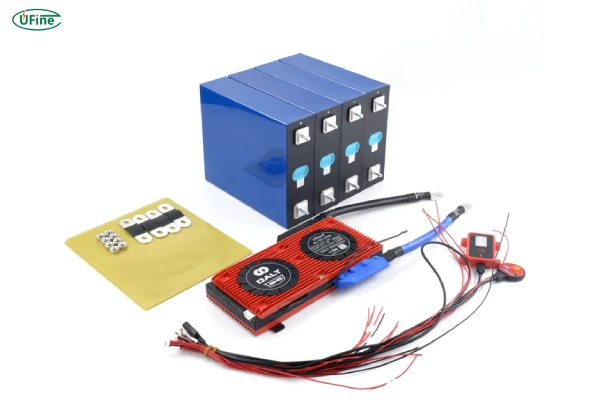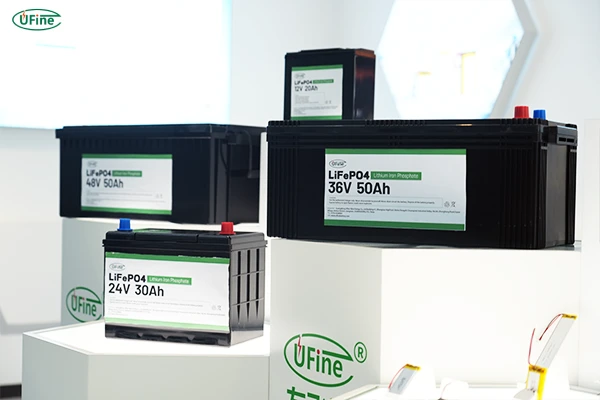
- Part 1. What’s included in a lithium battery kit?
- Part 2. Types of lithium battery kits
- Part 3. 12V, 24V, 48V kits – Which voltage is right for you?
- Part 4. Top applications
- Part 5. Lithium vs. lead-acid: why lithium wins every time?
- Part 6. How to choose the best lithium battery kit
- Part 7. Step-by-step lithium battery kit installation
- Part 8. Safety tips you can’t ignore
- Part 9. Maintenance & maximizing lifespan
- Part 10. When to replace your lithium battery kit
- Part 11. Cost analysis
- Part 12. Final thoughts
If you’re considering a lithium battery kit, you’re already on the right path toward efficient, long-lasting energy storage. But with so many options, how do you choose the best one? And once you have it, how do you ensure it performs optimally for years?
This guide isn’t just a surface-level overview—it’s a deep dive into lithium battery kits, covering everything from chemistry differences to real-world applications, safety protocols, and cost-effectiveness. By the end, you’ll know exactly which kit suits your needs and how to maximize its lifespan.
Part 1. What’s included in a lithium battery kit?

A lithium battery kit isn’t just a battery—it’s a complete power solution. Here’s what you’ll typically find inside:
-
Lithium Battery Cells – The core of the system, available in LiFePO4, NMC, or LiPo chemistries.
-
Battery Management System (BMS) – The brain of the operation, preventing overcharge, over-discharge, and overheating.
-
Wiring & Connectors – High-quality cables to ensure minimal resistance and efficient power transfer.
-
Charger (Sometimes Sold Separately) – A compatible charger ensures safe, optimized charging cycles.
-
Mounting Hardware – Brackets or cases to secure the battery in place.
But here’s what many people overlook:
-
Inverter Compatibility – Some kits include an inverter, while others require a separate purchase.
-
Solar Charge Controller – If you’re using solar, ensure your kit supports it.
-
Temperature Sensors – Advanced kits include thermal management for extreme climates.
NMC vs. LFP vs. LTO Batteries: A Complete Comparison Guide
Pro Tip: Always verify the contents before purchasing. Missing a BMS or proper wiring can lead to safety hazards or poor performance.
Part 2. Types of lithium battery kits
Not all lithium batteries are the same. The three main types—LiFePO4, NMC, and LiPo—serve different purposes. Let’s dissect each:
A. LiFePO4 (Lithium Iron Phosphate) Kits
-
Best For: Solar storage, RVs, marine, off-grid homes.
-
Why? Unmatched safety (non-flammable), longevity (3,000-5,000 cycles), and stability in extreme temps.
-
Downside: Slightly heavier and less energy-dense than NMC.
B. NMC (Nickel Manganese Cobalt) Kits
-
Best For: Electric vehicles (EVs), high-performance applications.
-
Why? Higher energy density (more power in less space), faster charging.
-
Downside: Shorter lifespan (~1,000-2,000 cycles) and higher fire risk if damaged.
C. LiPo (Lithium Polymer) Kits
-
Best For: Drones, RC cars, portable electronics.
-
Why? Ultra-lightweight, flexible shapes, high discharge rates.
-
Downside: Very flammable, short lifespan (~500 cycles), sensitive to overcharging.
Which One Should You Choose?
-
For home/solar use? LiFePO4 (safety & longevity).
-
For EVs or high-power needs? NMC (energy density).
-
For lightweight, high-drain devices? LiPo (but handle with care).
Part 3. 12V, 24V, 48V kits – Which voltage is right for you?
Choosing the correct voltage isn’t just about compatibility—it’s about efficiency, cost, and scalability.
| Voltage | Best Applications | Pros | Cons |
|---|---|---|---|
| 12V | Small RVs, boats, basic solar | Easy to find components, affordable | Less efficient for large systems |
| 24V | Medium off-grid setups, campervans | More efficient than 12V, good balance | Fewer plug-and-play options |
| 48V | Large solar systems, home backup | Highest efficiency, lower current (less heat) | Expensive, requires compatible inverters |
Key Insight:
-
Higher voltage = less energy loss (due to lower current).
-
48V is ideal for whole-home backup, while 12V is best for portable setups.
Part 4. Top applications
A. Solar Energy Storage
-
Store excess solar power for nighttime use.
-
LiFePO4 is the top choice due to its deep-cycle capability.
B. RV & Marine Power
-
Lightweight, no maintenance, and long lifespan.
-
No more lead-acid battery weight!
C. Off-Grid Living
-
Reliable power without grid dependency.
-
48V systems are ideal for cabins and tiny homes.
D. Electric Vehicles (EVs & E-Bikes)
-
NMC dominates here for its high energy density.
E. Emergency Backup Power
-
Keep essentials running during blackouts.
-
Pair with an inverter for AC power.
Part 5. Lithium vs. lead-acid: why lithium wins every time?
| Feature | Lithium | Lead-Acid |
|---|---|---|
| Lifespan | 3,000-5,000 cycles | 300-500 cycles |
| Weight | 1/3 the weight | Heavy & bulky |
| Efficiency | 95%+ | 70-80% |
| Maintenance | Zero | Requires watering |
| Discharge Depth | 80-90% safe | Only 50% recommended |
Bottom Line:
-
Lithium costs more upfront but saves money long-term.
-
No more battery replacements every 2-3 years!
Part 6. How to choose the best lithium battery kit
1. Determine Your Power Needs
-
Calculate daily watt-hour usage (appliances x hours used).
2. Select the Right Chemistry
-
Safety-first? LiFePO4.
-
Maximum power in small space? NMC.
3. Check BMS Quality
-
A poor BMS can ruin your battery—look for overcharge/discharge protection.
4. Brand Reputation Matters
-
Stick with Battle Born, Renogy, or Victron for reliability.
5. Warranty & Support
-
At least 5 years for LiFePO4.
Part 7. Step-by-step lithium battery kit installation
-
Unpack & Inspect – Ensure no shipping damage.
-
Connect BMS First – Prevents accidental shorts.
-
Secure Battery Cells – Avoid vibration damage.
-
Test Voltage Before Use – Confirm proper connections.
-
Charge Fully Before First Use – Balances cells.
Safety Note: Always wear insulated gloves when handling high-voltage systems.
Part 8. Safety tips you can’t ignore
-
Never expose to extreme heat (risk of thermal runaway).
-
Use a smart charger (prevents overcharging).
-
Store in a fireproof enclosure (especially LiPo).
Part 9. Maintenance & maximizing lifespan
-
Avoid 100% discharges – Stick to 20%-80% for longest life.
-
Store at 50% charge if unused for months.
-
Check connections annually – Loose wires cause inefficiency.
Part 10. When to replace your lithium battery kit
-
Capacity drops below 70% of original.
-
Physical swelling or leaks (immediate replacement needed).
-
Frequent overheating (could indicate cell failure).
Part 11. Cost analysis
-
Initial Cost: 2-3x more than lead-acid.
-
Long-Term Savings: Lasts 10+ years vs. 3-5 for lead-acid.
-
No maintenance costs – No watering, no equalizing charges.
| Lead-Acid Battery | Lithium Battery Kit | |
|---|---|---|
| Cost | $300–$500 | $600–$1,200 |
| Lifespan | 2–3 years | 8–12 years |
| Usable Energy | ~50% | ~90%+ |
| Maintenance | Regular | Minimal |
Verdict: If you need reliable, long-term power, lithium is the best investment.
Part 12. Final thoughts
Lithium battery kits aren’t just a trend—they’re the future of energy storage. Whether you’re powering an RV, going off-grid, or preparing for emergencies, the right lithium kit ensures efficiency, safety, and longevity.
Still unsure which one to pick? Ask yourself:
-
Do I prioritize safety? → LiFePO4
-
Do I need maximum energy density? → NMC
-
Is weight a critical factor? → LiPo (but handle carefully)
Now that you’re armed with expert knowledge, it’s time to make an informed decision. Your perfect lithium battery kit is out there—go find it!
Related Tags:
More Articles

Battery Load Test: A Comprehensive Guide
Step-by-step battery load test guide for car, solar & industrial use. Learn how to load test a battery, interpret voltage charts, and avoid common mistakes.
The Comprehensive Guide to Battery Balancing and Battery Balancer
Discover how battery balancers improve lithium battery performance, lifespan, and safety. Learn types, functions, and tips to choose the right balancer.
What Is the Best Voltage for a Chainsaw Battery?
Compare 12V-80V chainsaw batteries for light pruning, medium firewood, and professional cutting. See best battery chainsaw with runtime charts and safety tips.
Lithium VS. Alkaline Batteries: A Comprehensive Comparison
Lithium batteries last 3–7× longer than alkaline and perform better in cold weather. Compare lifespan, cost, safety, and best uses to choose the right battery.
Comparing Lithium-Sulfur and Lithium-Ion Batteries: Which is Right for You?
Compare lithium-sulfur (Li-S) and lithium-ion batteries on energy, lifespan, cost, safety, and applications. Best choice for drones, EVs, and electronics.



